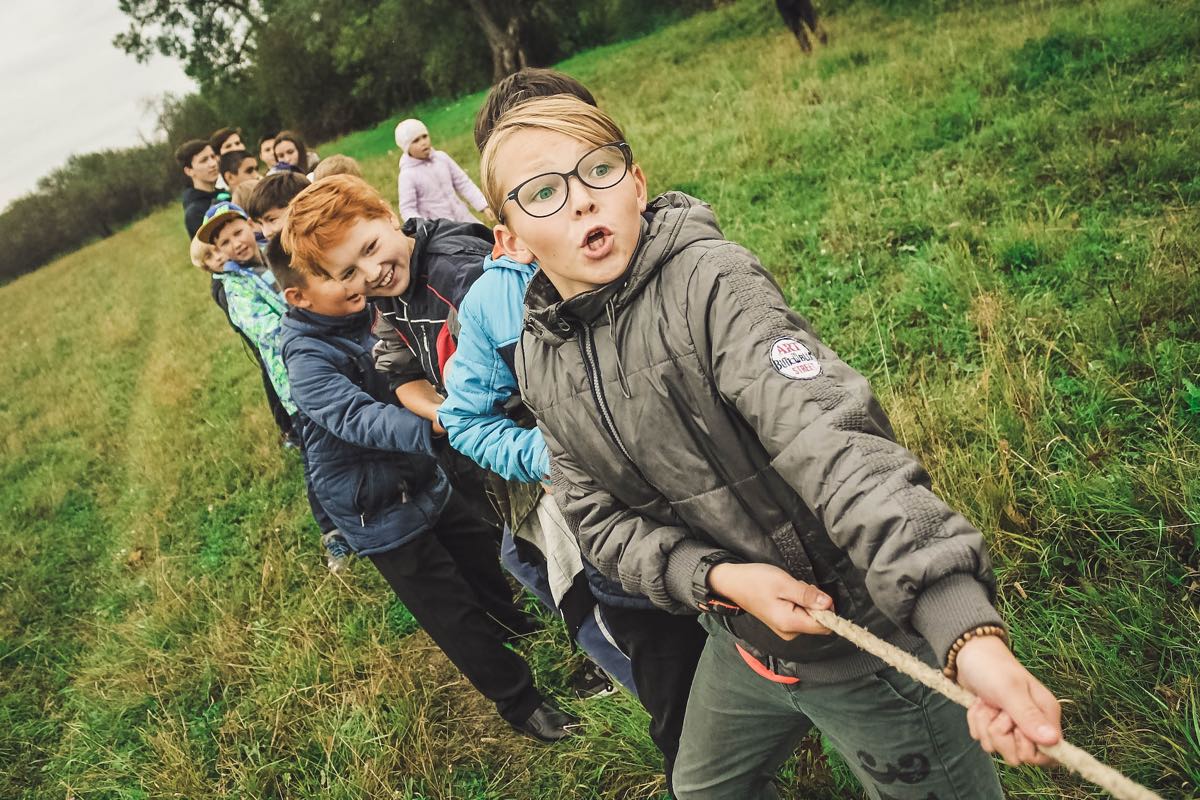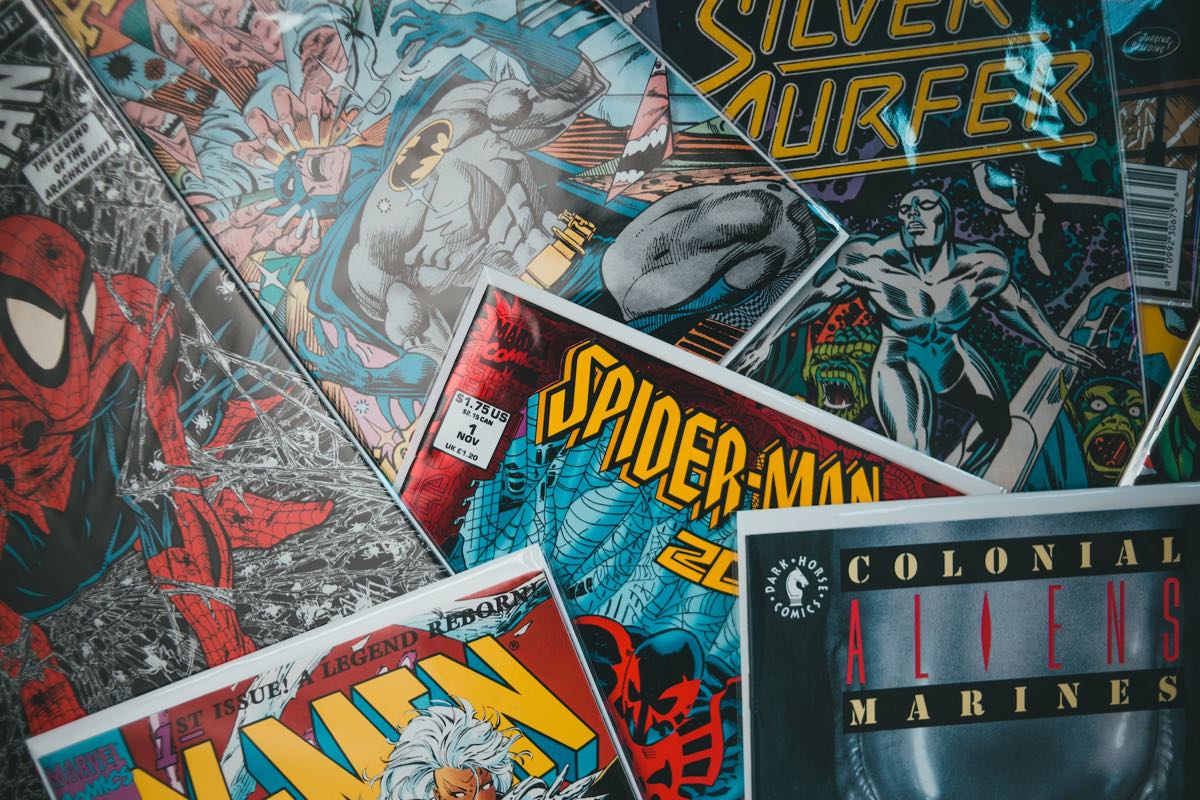In this detailed guide, we will share simple strategies and resources to bring more English into your home! This will help your children to speak English daily and make progress with their spoken fluency. We will show you how to build vocabulary, improve pronunciation and help your kids to gain confidence with their English speaking skills. This guide is for parents of children between 5-12 years old and all of the recommended resources are available online (and mostly free of charge).

As a parent, you are in an ideal position to teach your kids to speak English and develop their language skills at home. We’ve written this study guide to help you do this!
Before we get started, there are several important things to consider:
Let’s take a look at some study techniques and resources that you can use today to help your child speak more English at home…
Kids love games! If you want your child to love English, then it makes sense to combine the two.
To improve your child’s spoken English, try introducing some language games into your daily routine. These games should be fun and short in duration. Some can be played at home, and others when you are out and about.
In this list of kids’ games, we have included: word games, family games, riddles and storytelling activities. All of these can be played at home with just you and your child, but of course more children (and parents) can get involved too! Always remember that using language is primarily a social activity so inviting others to participate is often a good idea.
Word games are a great way to expand your children’s vocabulary and get them speaking in English about the world they see around them. Try some of the speaking games below when you are at home or on the go with your son or daughter!

To play this game, simply give a command to your child, for example: “Go and touch something blue” or “Go and find me something yellow”. To make this more difficult (depending on your child’s level of English), you can add more detail to your requests. For example: “Bring me a red pen” or “Find a picture with green in it”. You could also play this game in the garden or when out walking in the park – “Show me a yellow flower”. This game is great for learning and remembering new colours and other everyday vocabulary connected with common objects!
“I spy” is a popular guessing game that British parents often play with their kids in the car or when travelling by train. In case you were wondering, “spy” is just another word for “see”. One person says the phrase: “I spy with my little eye something beginning with…” and then gives a letter of the alphabet (A-Z). The other players then have to look out of the window and guess which object the first person has “spied”. For example:
Parent: I spy with my little eye…something beginning with “T”!
Child: Is it tree?
Parent: Good try, but I’m thinking of something else. Guess again!
You can help others to guess by giving clues: “It’s like a very big car and it’s long too, and it carries things from one place to another” (truck).This is a fun game to help children speak and improve their vocabulary in English. It also helps kill time on long journeys or when your kids are bored in the car!
In this game, you say a word aloud and your child has to give the opposite (e.g. girl – boy, big – small etc). The great thing about this activity is that it can be adapted for any level. If your child is a beginner, you can start with basic words (cat – dog, mum – dad, good – bad), but for more advanced learners you can use harder words (difficult – easy, interesting – boring, greedy – generous).
This speaking game is like Hide & Seek, but with objects rather than people! First, ask your child to take an object (e.g. a book, a pen, a pair of glasses etc.) and hide it somewhere in the house. Next, you will need to find the object by following their instructions in English. For example: “It’s next to the sofa”, “It’s upstairs”, “It’s on the top shelf” etc. Remember to switch roles so each participant has a chance to ask questions and find the object. This is also a good activity for practising prepositions of place.
This is a fun way to learn the names of clothes! Start by asking your child to put on different items of clothing from a “dressing up box” (but without pointing to them). For example, a hat, a coat, a scarf, a jumper. Your child will need to find the item of clothing and repeat the word back to you. He or she will then put it on, but without removing the previous item! You can then switch roles. You can make this game more fun by having bright or unusual clothes to wear. If there are several similar items, specify which one you mean with phrases like: “The red stripy t-shirt” or “The long purple dress”. This is a good method for practising adjectives in English.
This is a simple activity to get kids speaking English at home! First you need to mime or perform an action – run, dance, skip, hop, jump, climb etc. Ask your child to describe what you are doing, for example: “You are jumping” or “You are dancing”. You could even do this while you are cooking and ask your child to give more complex descriptions: “You are chopping onions”, “You are boiling water” or “You are frying potatoes”.
For this game you will need a pen and paper! Write down a long word on the paper and explain its meaning (if the child doesn’t know it already). Then set a timer for 2 minutes. During this time, you and your child should write down as many English words as you can find by using the letters in the long word. For example, if the word is “conversation” you could list: sit, sat, one, tin, note, van, version, coin etc.! At the end you can take turns to read out your words. The winner is the person who gets the most words, but make sure they are all spelt correctly! Longer words can be awarded more points.
This is a great game to improve your child’s pronunciation and spoken fluency in English. Tongue twisters, such as She sells seashells by the seashore, are a sequence of words that are difficult to pronounce quickly and correctly! Print out a short list of several tongue twisters – one copy for you and one for your child. Practise saying them together slowly and make sure you understand the words. Then take turns to see who can say the tongue twisters fastest. This can be a lot of fun because everyone makes mistakes!For example, try this famous English tongue twister:How much wood would a woodchuck chuck if a woodchuck could chuck wood?
He would chuck, he would, as much as he could
And chuck as much wood as a woodchuck would if a woodchuck could chuck wood.If you are unsure of the pronunciation, try these tongue twisters with audio recordings from the British Council Learn English Kids website!
Using the language in any type of play situation is a great way to get your kids speaking English while having fun too. So next time you are going to play a game with your family, why not trying doing this in English? Below are some examples of games you can play at home with your family and friends! These are best played with 3+ players.

Popular board games like Monopoly are interactive and involve both speaking and reading. This means they are a great way to practise English at home with your kids! If you buy the original version, the board and all the cards are written in English. It may be best to choose board games that your child already knows in your native language so that the rules are familiar. If you don’t like Monopoly, give these other games a try:
This is a miming and guessing game. First you need to write down some English words on small pieces of paper. These words should be a secret from the other players. It is best to choose a specific topic or theme that your child knows well – for example, simple actions (running, swimming, climbing) or familiar cartoons. Take it in turns to pick up a piece of paper and act out the words or phrases on it. Remember that the person acting out the word or phrase is not allowed to speak! The other participants should ask questions and try to guess the word.
This game is like Charades, but instead of acting you need to draw pictures to guess words! Write down some English words or phrases on small pieces of paper. These could be nouns (apple, bucket), verbs (swim, climb), adjectives (greedy, lazy) or even the titles of kids’ books (The Jungle Book, Alice in Wonderland). One person should choose a piece of paper and then draw the word that is written on it. The other players should try to guess what the “artist” is drawing. This is a fun game that helps kids combine English speaking with art!
For this game you will need to collect some random household objects (e.g. banana, pen, whisk, candle, book, etc.) and put them together on the table. Set a timer for 1 minute. During this time, you and your child need to memorise all the objects! When the time is up, cover the objects with a towel or place them in a box under the table. Take some paper and pens. Now write down as many objects as you can remember. When this is done, you can take turns to read them out and see who has the best memory! For extra speaking practice, you can play this game orally and without writing anything down on paper.
Unfortunately, most kids these days prefer computer games to those we have described above! However, you can still encourage your children to improve their English while playing games on consoles, iPads and mobile phones. Here are some ways of doing this:
Kids are often fascinated by riddles or puzzles, and these can be a lot of fun in English too! Riddles make children “think outside the box” and test their ability to problem solve. They are also a great way to help your child speak English a bit more at home. Let’s look at a couple of examples:
Q: What has a face and two hands, but no arms or legs?
A: A clock.
Q: What goes up when the rain comes down?
A: An umbrella.
Q: What can you catch but never throw?
A: A cold.
You can use riddles to help your child remember new vocabulary, form questions correctly and be more creative with language. Here are some ways you might use riddles:
Kids have active imaginations and love making up stories! These can be simple or more detailed, depending on the level of English spoken by your child. Storytelling activities can help kids improve their English speaking in several ways:
VOCABULARY = Storytelling involves sequences of events, characters and descriptions. Words and phrases are repeated frequently and this helps your child to remember them in context.
PRONUNCIATION = Storytelling is a verbal activity and involves speaking aloud to other people. This provides a good opportunity to listen carefully to your child’s pronunciation. You can then help to improve this, or perhaps look for a native English tutor.
SPEAKING = Your child will gain confidence when speaking English to others and can have fun being creative with the language. Learning to produce unique sentences (or utterances) independently is an important part of developing spoken fluency.
Let’s take a look at three storytelling activities that you can do with your kids at home:
This funny phrase in English just means “small, random things”. Start the activity by collecting some small objects from around the house – e.g. toy horse, flower, cup, doll, Lego man, etc. Place these on the table and put out some paper and coloured pens. Now your task is to write a simple story that includes the objects on the table! You can begin by arranging them in an order of your choice. Then ask your child to fill in the details as you ask questions and write down the story:
As you can see, making up stories like this can be a lot of fun! Once you have finished your story, read it to your child and then ask him or her to tell it back to you. If it’s a good one, you could turn it into a little play and act it out for your family.
This is a popular storytelling game among English teachers and can be played in pairs or with a bigger group of children. Start by cutting some A4 sheets of paper in half. Give one piece of paper and a pen to each player. On another full sheet of paper (or small whiteboard) write down these numbered questions:
Next ask each player to write down their answer to question 1 at the top of their piece of paper. This is a secret so don’t show your answers to the others! Tell the players to fold their paper over to hide the first answer. Now everyone should write “2” below the fold and pass their piece of paper to the person on their left. Repeat this with the remaining questions.
When you have answered all the questions, stop and ask each player to read out the finished story in their hands. These are often funny because each player is “writing blind” and doesn’t know what has gone before. This activity works best with 3+ players.

In recent years, comic book heroes have become “super popular” in cinemas and on TV! Kids love them and often play games where they imagine being superheroes themselves. If your child is into comic books, you can try creating some together in English! Here’s how:
These are primarily for younger learners who are getting started with their English. Nursery rhymes usually focus on a narrow set of words connected with just one topic – e.g. colours. This makes them perfect for teaching vocabulary and pronunciation in a simple and repetitive format. Some nursery rhymes also come with actions that you can perform with children to help then remember the meanings of the words. Let’s take a look at five of the most popular rhymes in English:
This classic nursery rhyme is a great way to learn and practise the names of animals and the noises they make. These can differ greatly between languages and are funny to compare! You can try adding an action for each animal – e.g. wings flapping for a chicken. Children can also continue the rhyme by adding new animals of their own.
A simple nursery rhyme for teaching children colours in English. These are represented in the form of a rainbow: “Red and yellow and pink and green, purple and orange and blue…I can sing a rainbow, sing a rainbow, sing a rainbow too”. The repetition in the rhyme helps kids remember the words.
Parents have adapted this rhyme over the years. It now has many different “additions” that include animals and reactions to seeing them. The classic line goes like this: “Row, row, row your boat gently down the stream…merrily, merrily, merrily, merrily…life is but a dream”. The word “but” here means “just”. The newer additions to the rhyme include crocodiles (shriek), polar bears (shiver), lions (roar) and sometimes other animals!
This popular rhyme describes the journey of a bus and its various passengers. It includes vocabulary that describes actions and noises made by people and things: wheels go round, horn goes beep, doors open and close, etc. As with rhyme 3 above, there are many alternative versions of this song. Try adding some new words and actions/noises of your own to make it unique to you!
This nursery rhyme helps children to practise physical actions. It gives various instructions: nod your head, clap your hands, stamp your feet, etc. Often kids know the names of parts of the body, but don’t know the more difficult vocabulary that describes what these parts do. To add more complexity later in the song, you can ask kids to repeat several actions in a row with: “If you’re happy and you know it do all three!” – nod nod, clap clap, stamp stamp.
For most kids, music and singing is a natural part of their daily lives. Your kids may already be used to learning through songs, so the next step is to add a bit of English! In this section, we will look at some songs that may be suitable for older children with more advanced speaking skills. But first let’s look at HOW you might use these songs to improve your child’s spoken fluency.

Recommended strategy:
Listen to the song before you play it to your child. Make sure you understand it and write down any words you think your child may not know already. Perhaps also translate it into your language.
For a large collection of kids’ songs in English, try the British Council website. This has a great resource page for teaching kids English through music. You can choose from over 50 different songs and each one comes with an animated video and lyrics. There are also free pdfs to download with vocabulary and activities for each song.
This one is somewhere between a nursery rhyme and a kids’ song. It’s actually a traditional campfire tune and has a lot of repetitive elements. It’s a good one to start with, and is fun to sing too! The song describes the arrival of a lady and what she is doing on the way. There are some funny verses like: “She’ll be wearing pink pyjamas when she comes”. It’s also common for people to create their own short verses, so feel free to try this with your kids!
This is a funny song by the creators of the Scratch Garden YouTube channel for kids. It’s a crazy song about “a moose drinking juice”, but it’s great fun! Sometimes it’s easier to remember words if you make unusual associations with them. This song certainly uses this memory technique.
Every parent probably knows this old classic by The Beatles! It’s still popular with kids today and is sometimes used in English nurseries and primary schools. To refresh your memory, here is the first verse:
In the town where I was born
Lived a man who sailed to sea
And he told us of his life
In the land of submarines
So we sailed up to the sun
Till we found a sea of green
And we lived beneath the waves
In our yellow submarine
It’s an imaginative song that appeals to kids’ creative side. Perhaps combine this song with some art or drawing activities. You could even make a picture of a big yellow submarine and write the lyrics down around it!
This is another classic song that will be familiar to many parents. It’s a great one to sing with kids because it’s full of hope and optimism about the world around us. The lyrics to the track are simple enough for children to understand, it’s short in length and the words are pronounced clearly. Here is the opening to the song:
I see trees of green, red roses too
I see them bloom for me and you
And I think to myself what a wonderful world
Older kids may think some of the songs above are “uncool” or “boring”. This one is an example of a modern pop song by British artist Ed Sheeran. It’s a good track for kids because the words are simple and the pronunciation is understandable. The content of the song is also suitable for children. You can help your son or daughter by finding out about their favourite English bands and then selecting appropriate songs to use for home study.
For your kids to improve their spoken English quickly, they need to have daily contact with the language. One way to increase this “contact time” is to swap some activities usually done in the child’s mother tongue to equivalents in English. Why not try this with cartoons?
Recommended strategy:
Below we have selected our top-10 cartoons, all of which can be found on YouTube!
What does reading have to do with speaking English? A lot!
Children cannot speak English well without also developing their vocabulary, listening skills and general understanding of language structure. Books offer us a way of practising all of these skills together. Kids’ books usually contain plenty of colourful pictures that tell the story. These visual aids also help children to understand the English being used.
Recommended strategy:
Let’s take a look at our top-10 list of English children’s books:
Getting children to use English apps is a simple and easy way to incorporate English into their daily lives in a fun way. This list of the 5 best free English apps includes both educational apps (specifically for learning English) and general play apps for native English children.
The more your child is exposed to the language in their daily play time, the more English will become naturally part of their life. Apps are great for children as they are interactive and visually stimulating; designed to keep your child’s attention and engage them fully. These apps will make learning English a lot more entertaining than just studying with a textbook!